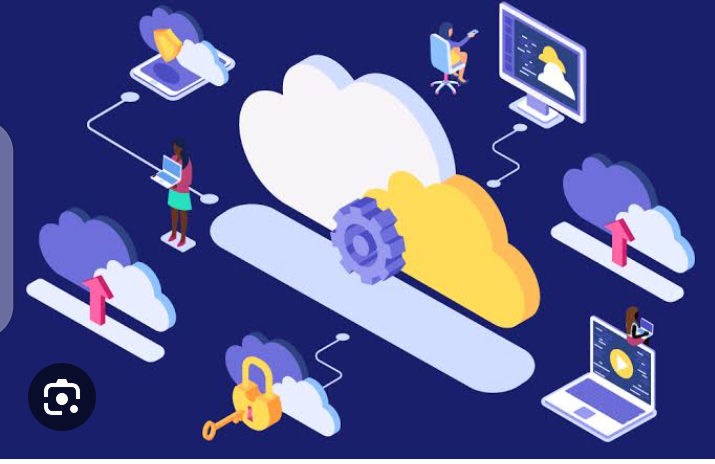Threat Hunting and Detection: Importance, Types & Models
Threat hunting is the practice of proactively searching for cyber threats that are lurking undetected in a network. Cyber threat hunting digs deep to find malicious actors in your environment that have slipped past your initial endpoint security defenses.
Why threat hunting is important
Threat hunting is important because sophisticated threats can get past automated cybersecurity. Although automated security tools and tier 1 and 2 security operations center (SOC) analysts should be able to deal with roughly 80% of threats, you still need to worry about the remaining 20%. The remaining 20% of threats are more likely to include sophisticated threats that can cause significant damage.
How threat hunting works
Threat hunting is a proactive cybersecurity approach aimed at identifying and mitigating potential threats and security incidents that may have evaded traditional security defenses. It involves actively searching for signs of malicious activities or attackers’ presence within an organization’s network or systems. Threat hunting is typically carried out by skilled cybersecurity professionals.
Cyber threat hunters bring a human element to enterprise security, complementing automated systems. It goes beyond traditional detection technologies, such as security information and event management (SIEM), endpoint detection and response (EDR), and others. Threat hunters comb through security data. They search for hidden malware or attackers and look for patterns of suspicious activity that a computer might have missed or judged to be resolved but isn’t.
Types of Threat Hunting
Threat hunting involves different approaches and techniques to identify potential security threats and indicators of compromise within an organization’s environment.
Here are some common types of threat hunting:
- Signature-Based Hunting: It involves searching for known patterns or signatures of known threats or malware in the organization’s logs and network traffic using predefined signatures, rules, or IOCs to identify specific malicious activities.
- Anomaly-Based Hunting: It focuses on identifying abnormal or unusual behavior within the network or endpoints that may indicate potential threats using baselines and behavioral analytics to detect deviations from normal patterns.
- Indicators of Compromise (IOC) Hunting: It involves searching for IOCs obtained from threat intelligence feeds, security incidents, or previous attacks. It concentrates on identifying specific indicators or artifacts that suggest the presence of an attacker or malicious activity.
- Threat Intelligence-Driven Hunting: It uses threat intelligence to develop hypotheses for proactive hunting by leveraging external threat intelligence to search for potential threats based on known attack patterns, tactics, techniques, and procedures (TTPs) used by threat actors.
- Adversary-Based Hunting: It focuses on understanding the tactics, techniques, and procedures (TTPs) of specific threat actors or advanced persistent threats (APTs) by hunting for traces of known or suspected adversary activities.
- Hunt Teaming: It involves collaboration between threat hunters and red team members to simulate real-world attack scenarios. The Red team simulates attacks, and threat hunters actively search for signs of the simulated attacks within the network.
- Context-Driven Hunting: It focuses on hunting for threats that are most relevant to the organization’s specific risks and challenges. It considers the organization’s unique environment, business processes, and potential attack vectors when conducting threat hunts.
- Hunt-as-a-Service: External experts conduct threat hunting on behalf of the organization, leveraging their expertise and tools. It Involves outsourcing threat hunting activities to specialized cybersecurity service providers.
Threat hunting is an iterative and ongoing process that requires continuous refinement and adaptation to stay ahead of evolving cyber threats. Organizations may use a combination of these threat hunting types based on their resources, capabilities, and specific security needs.
Hunting Models
Threat hunters assume that adversaries are already in the system, and they initiate investigation to find unusual behavior that may indicate the presence of malicious activity. In proactive threat hunting, this initiation of investigation typically falls into three main categories:
Intel based hunting
- This approach to threat hunting involves leveraging tactical threat intelligence to catalog known IOCs and IOAs associated with new threats. These then become triggers that threat hunters use to uncover potential hidden attacks or ongoing malicious activity. Intel-based hunting is a reactive hunting model. That uses IoCs from threat intelligence sources. From there, the hunt follows predefined rules established by the SIEM and threat intelligence.
Hypothesis hunting
- Hypothesis-driven investigations are often triggered by a new threat that’s been identified through a large pool of crowdsourced attack data, giving insights into attackers’ latest tactics, techniques, and procedures (TTP). Once a new TTP has been identified, threat hunters will then look to discover if the attacker’s specific behaviors are found in their own environment.
Custom hunting
- Custom hunting is based on situational awareness and industry-based hunting methodologies. It identifies anomalies in the SIEM and EDR tools and is customizable based on customer requirements.
Threat hunting tools
- Hunters use data from MDR, SIEM and security analytics tools as a foundation for a hunt. They can also use other tools, like packer analyzers, to execute network-based hunts. However, using SIEM and MDR tools require that all essential sources and tools in an environment are integrated. This integration ensures IoA and IoC clues can provide adequate hunting direction.
Threat Detection Methods
- Threat detection using behavior analysis: This model relies+ heavily on behavioral analysis. Unlike attackers’ activities in threat hunting, this user behavior analytics software monitors the systems and networks, analyzing the existing user activity.
- Threat intelligence: Threat intelligence is the knowledge you gather via past cyber incidents. Such knowledge helps to quickly isolate the known attacks and identify attack-specific prevention methods. Threat detectors use such collected signature data to compare the suspicious attack behaviors with known data to verify their existence and quickly mitigate the threat.
- ML-based threat detection: ML is also integrated into threat-detection tools and technologies. These can detect known attack patterns with high accuracy in real-time and stream data like network traffic logs.
- Using intruder traps: Another technique threat detectors leverage is intruder traps. These are like baits that attackers will be attracted to, not knowing their true purpose.
Why is periodic Threat Hunting Important to your organization’s security?
Threat hunting is important for several reasons, especially in the context of cybersecurity and defense against cyber threats.
- Proactive approach: Threat hunting involves actively searching for potential security threats and anomalies within an organization’s network and systems. It allows security teams to be proactive rather than reactive, identifying and mitigating threats before they cause significant damage.
- Detecting advanced threats: Traditional security measures like firewalls and antivirus software are essential but may not be sufficient to detect sophisticated, evasive threats. Threat hunting enables organizations to discover more advanced threats, such as zero-day exploits and insider threats, that may go undetected by conventional security measures.
- Reducing dwell time: Dwell time refers to the duration between when a threat enters a network and when it is discovered and mitigated. Threat hunting can help reduce dwell time by quickly identifying and responding to threats, minimizing potential damage and data breaches.
- Enhancing incident response: Threat hunting enhances an organization’s incident response capabilities. By proactively seeking out threats, security teams gain valuable insights into attackers’ tactics, techniques, and procedures (TTPs). This knowledge can be used to improve incident response plans and develop more effective defense strategies.
- Identifying insider threats: Not all threats come from external sources. Insider threats, whether intentional or accidental, can pose significant risks to an organization’s security. Threat hunting can help identify unusual behavior or data exfiltration patterns that may indicate insider threats.
- Improving overall security posture: Regular threat hunting exercises can reveal weaknesses in an organization’s security infrastructure and processes. Addressing these vulnerabilities can lead to an overall improvement in the security posture of the organization.
Conclusion
In conclusion, threat hunting stands as a powerful weapon in the arsenal of modern cybersecurity defenses. As cyber threats continue to evolve in sophistication and scale, relying solely on reactive security measures is no longer sufficient. Threat hunting allows organizations to take a proactive approach, actively seeking out and mitigating potential threats before they escalate into full-blown security incidents. By combining human expertise with advanced analytics and threat intelligence, organizations can better understand their adversaries’ tactics, identify emerging attack vectors, and fortify their defenses against even the most elusive threats. Embracing the mindset of a hunter, organizations can strengthen their cybersecurity posture, safeguard their critical assets, and stay one step ahead in the ongoing battle against cyber adversaries. As we move forward, the continuous refinement of threat hunting techniques and the collaboration between human analysts and cutting-edge technologies will undoubtedly play a pivotal role in securing the digital landscape for years to come.
Are you seeking a trusted partner who can assist you in selecting the optimal technologies for your business and provide customized cybersecurity solutions to safeguard your valuable digital assets? Look no further than Enov8 Solutions! Our team of experts is well-equipped to cater to your unique requirements.
Contact us today to initiate a conversation about your specific needs and explore how we can collaborate to enhance your technological infrastructure.
Visit our website at enov8solutions.tech to learn more about our comprehensive range of services




